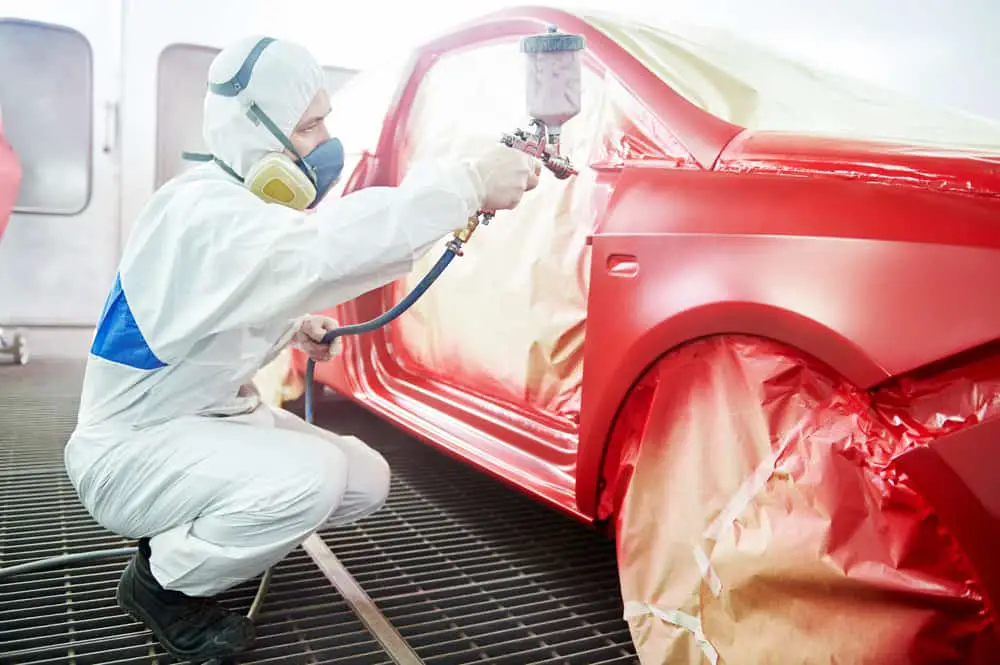
If the very sight of your car’s color makes you want to go and buy a new one, there’s a cheaper way to get your car to the color you want, but while it will be cheaper than buying a new one, it’s still going to cost you a fair amount to do.
Let’s examine all the components you need to consider before looking at changing the color of your car’s paint. Look at more cost-effective options that offer greater flexibility and versatility in this guide to changing car color.
Why Do You Want To Change Your Car’s Color?
This is probably the most relevant and important question of all to ask first, and there are two distinct scenarios that would warrant changing the color of your car.
The first is that you have bought a second-hand car or found one lying in a barn, and the paint job has succumbed to neglect and time. If you are doing a restoration, for example, and the current paint job is not viable, then a color change is justified.
The same may apply where you have a reliable car, but the color has faded, and you want to give it a new lease on life!
But if your car is relatively new and you don’t like the color, why did you buy it in that color in the first place?
If you planned to change the color to a specific one you prefer that wasn’t available from the dealer, then great, you have a plan, and you have probably budgeted for it.
However, if you gradually become unhappy with the car’s color and want to change it, prepare to spend some dollars doing this and ensure you are certain about which color you want.
Regardless of the reason, changing the color of your car will not be cheap, and it will take a few weeks to complete as the processes involved are quite strenuous, and there are no shortcuts to delivering a top-class paint job.
How Much Would It Cost To Change Car Color?
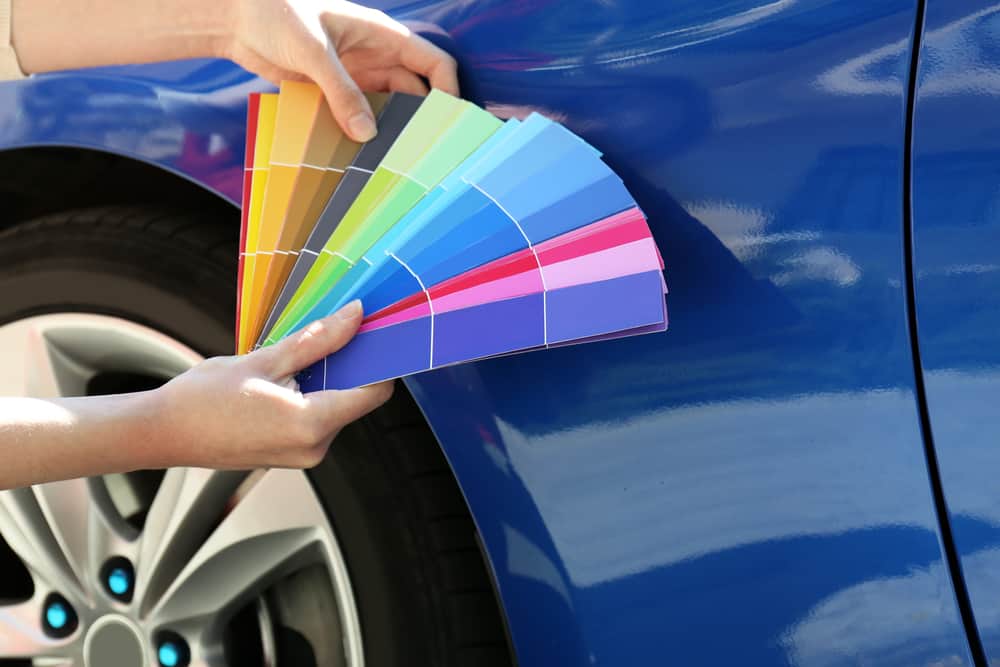
As with anything in this fast-paced world, you only get what you pay for, and the same applies to automotive paint jobs. When changing the car color, remember that this paint job has to last and look good so that if you ever decide to sell the car, the paint job adds value.
If you are going for a standard finish and not a metallic pearl or something exotic, changing the color of your car could cost a few thousand dollars at least, and north of that, if you want something more intricate.
A metallic-pearl finish could cost more than $10,000 if you decide to do a custom finish with additional artwork, pinstriping, or other custom finishes. There is no limit on the price of a paint job; the only limit is your bank account!
DIY vs Pro Painting
As a rule, unless you or someone you know has the right experience, ability, and facilities for painting your car, doing this is not a great idea. There is more to changing a car color than painting, and most of the cost is around preparation, not the painting itself.
And no, a couple of tins of spray paint are not going to work either, as you need to have prepared and primed the surfaces before painting, and you need an enclosed space with good ventilation and protection from dust to paint a car properly.
If you don’t have the proper equipment and skills to paint a car properly, save money and get it done by a reputable business.
There are some very compelling reasons to go this way, and the main one is that you need to get a proper paint job and not one that will peel or chip within a few weeks or months.
If problems arise after the job is done, you can take it back and get it sorted out without costing you anything.
Make sure you do your homework before entrusting your car to anyone, and it’s a good idea to go to the business first, meet the people there and make sure they are industry certified for your peace of mind.
If you go the DIY route and get it wrong, you have to start all over again, which will take more time and money.
What’s Involved When Changing Car Color?
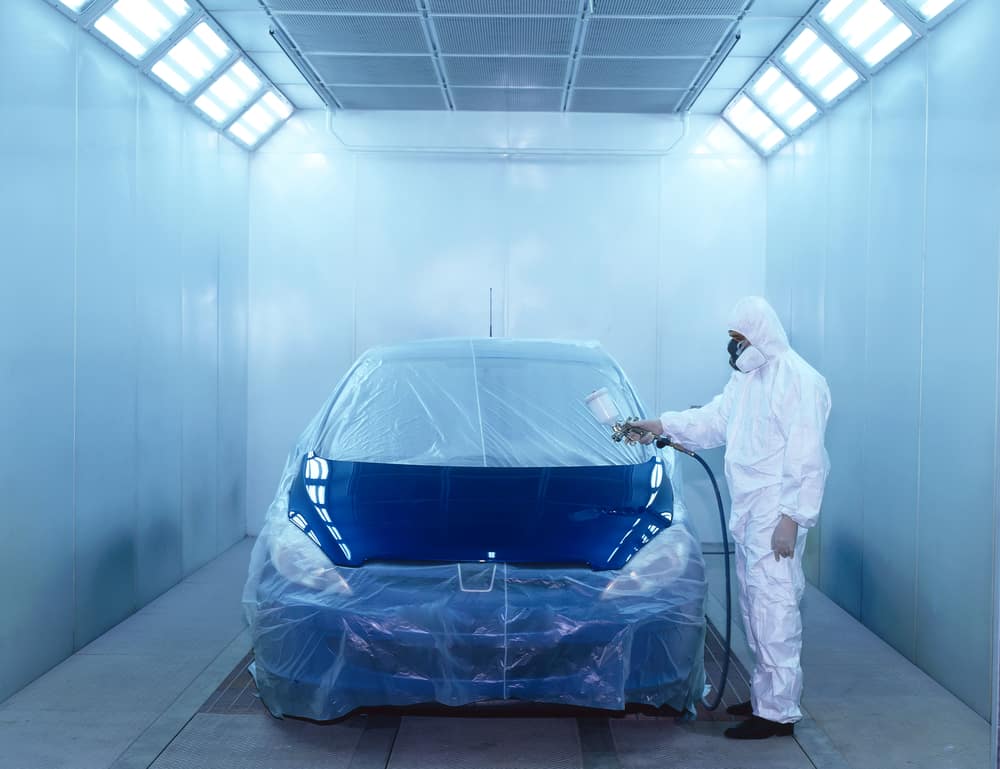
Nothing is ever as simple as it may seem on the outside, and changing car color is no different. Aside from painting, much preparation goes before a single layer of paint is sprayed.
Firstly, the painters will check for rust and other damage that may need to be repaired and filled before paint is applied. This ensures that the body is smooth and even, and you don’t end up with craters in your paint job.
Rust would need to be removed, and any dents, scratches, or filler under the existing paint would have to be cleaned up, removed, sanded, and refilled, and this is where costs can mount quickly, and this means you may need more than just paint.
It is preferable to take your car for an assessment first so that the panel beaters can advise you on what needs to be done and where the potential pitfalls could be, so you don’t end up with a nasty surprise on your bill!
Preparing A Car For Painting
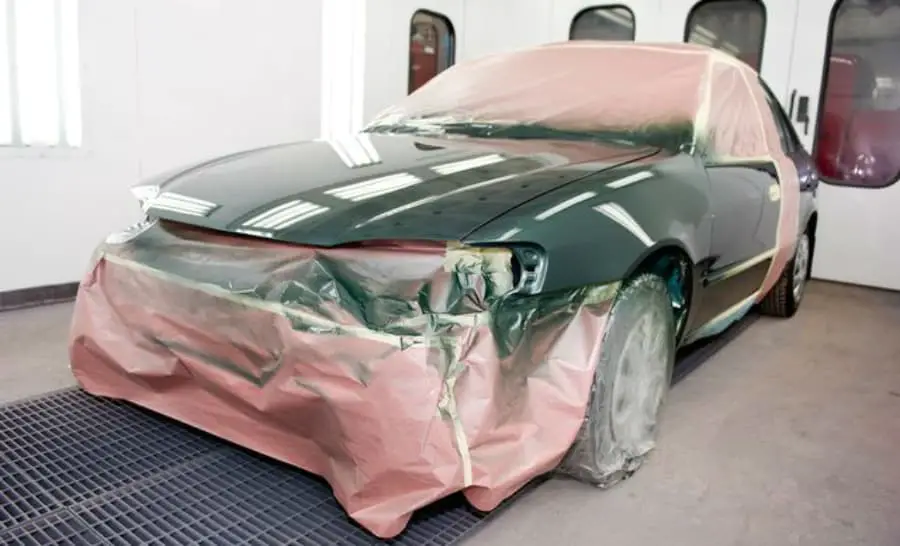
Whether you paint over the existing color or strip it down to bare metal and do it from scratch, there will be a lot of sanding, degreasing, and cleaning before the final body preparation.
Not only that, but you would need to consider whether you are only doing the exterior or if you are going to paint inside and out. If you are doing the whole car, the interior would need to be removed and all the steel surfaces prepared for painting.
Changing the color of your complete care and not just the outside will cost far more, and if that is the plan, then you would be advised to get a few different quotes to ensure you are getting a fair price for the work being done.
Stripping off the existing paint is the first step, and then the painters can determine if any other work is required, such as rust restoration or panel beating of dents in the body. Once the body has been cleaned and repairs made, the primer is added to create a smooth, even surface for the paint to come.
Repainting a car is often done without the interior, as leaving it in would risk staining the seats and other interior components.
Once the body is ready, the paint is applied and usually done in layers until the desired color is achieved. Once this is done, and the paint has dried, the clear coat is applied and left to dry to give the car that shiny, polished finish.
What Is Another Option To Change Your Car’s Color?
Aside from the painting process, there is another method to change the color of your car, which is quicker and cheaper: opting for a vinyl wrap, and here you have a great deal more options than you would with paint.
As digital printing technology has evolved, vinyl wraps have jumped on that bandwagon with great success. Using this process, you could have your car in any color, shade of color, and type of finish and have eye-catching graphics that truly POP!
Depending on the detail you want, this process may still set you back a few thousand dollars, as the application of the vinyl to the car is time-consuming and requires consummate skill to ensure there are no bubbles and that the wrap is on straight.
Skilled artisans design and cut vinyl, and your car will still require some preparation before applying the vinyl, although not as much as it would for painting.
One big advantage of vinyl is that you can change your car color every year or every few months if you want, making it a flexible and versatile option for changing the color of your car.
In the same breath, remember that removing a vinyl wrap can cause some damage to the paint underneath it, resulting in you needing to have them repaired or touched up.
How Long Does It Take To Change a Cars Color?
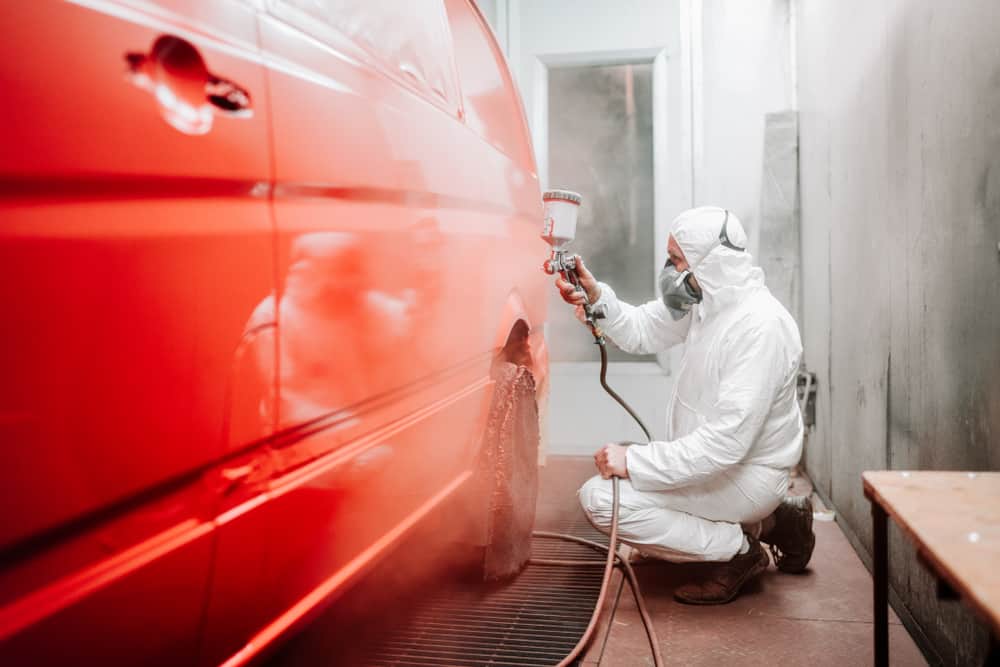
Painting the car could take several weeks, depending on the detail and the level of preparation and restoration needed. So, if you are going to opt for paint, then be prepared not to have a car for at least two weeks or so.
If the pre-paint process is not extensive and your car’s body doesn’t require much work, this time frame could be less, but your painter will advise you on the time needed.
You also have to accommodate for unforeseen delays with bodywork, as the only way painters can tell for sure what restoration needs to be done is when they have stripped the car down completely. There are bound to be unforeseen obstacles in any project, and repainting your car is not exempt.
They may find that the bodywork needs more layers of primer or filler, which will add time to the project, so if you proceed with the painting, make sure you have arrangements to either borrow a car or rent one until your color change is done.
As a color change solution, vinyl is far quicker, and even though a full wrap will take a few days or a week, it won’t be nearly as long as a full paint job. This is why many corporates opt for vinyl branding, as it’s quick, and the results make the vehicle highly visible on the road.
Changing Car Color And The Law
Ah, yes, it’s not just a question of changing the color; you must also inform the DMV of the color change.
This is because your car is registered as a specific color, and while this may slip your mind, you may find yourself in hot water if the car’s color and registration colors don’t match.
Laws on changing your car’s color vary from state to state, and even if it’s not required, it’s still a good idea to inform the DMV and update your car’s information.
Remember that if you drive out of state and happen to get pulled over, you may have difficulty explaining why your car’s current color isn’t the same as the color on the DMV database.
Aside from the DMV, you may also have to advise your insurance company of the color change so their information can be updated.
While the prospect of having to update your car’s color with the various institutions may feel like a hassle, it is far less of a hassle than going through the time-consuming process of explaining to Highway patrol or State Troopers why there is a difference between the registered color and the actual color!
Paint vs Vinyl – Which Has Better Resale Value?
If you have no plans to sell your car, then the vinyl option is better. Car dealers would be loathed to pay top dollar for a vinyl-wrapped car against one with a high-quality paint job, even if it’s not the original color.
It would help to consider this aspect before choosing which method to use. If your car is a classic and you want to sell it at some point, repainting in the original color is probably a better idea, as collectors often prefer actual colors on classic cars.
A dealer would have to either remove the vinyl at their cost or sell the car as is and risk getting a lower price for it. The dealer would have to spend money to have the paint redone or sell the vehicle at a lower price to compensate. The same would apply to poor-quality paint jobs for the same reason.
Always consider the effect that changing your car’s color could have on the resale value, and even though you may not be planning to sell the car now, you need to allow that to change over the coming years.
Conclusion
As you can see, changing car color is a complex process, and you need to weigh all of this up before making a final decision on the color and the method you will employ to do it. Notwithstanding the cost, time, and admin work involved, you must choose your color carefully.
On the bright side, changing car color will inject a new lease of life for your car and you, and once it’s done, you can drive around and turn heads, whether it’s a pure classic or custom paint job or some truly eye-catching vinyl!
If you have a favorite color and don’t want to change the color of your car, I listed the best cars that are available in each color below:
